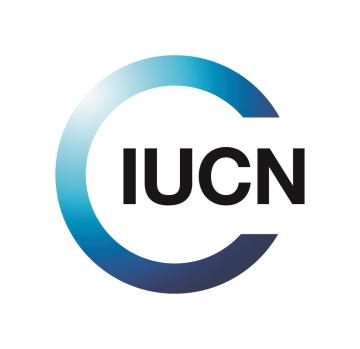
Corrales de Pesca : The Fishing weirs of Chipiona
Stretching along the shorelines of Chipiona, Spain, the corrales de pesca—historic stone fishing weirs—offer a glimpse into a centuries-old fishing practice that has been both a livelihood and a tradition. Dating back at least six centuries, these ingenious structures are a testament to ancient craftsmanship that is still in use today. The corrales, are stone enclosures built along the coast, each one carefully positioned to harness the rhythm of the tides. They create shallow lagoons, cleverly designed to trap fish as the tide recedes, leaving behind a bounty of species nestled among the rocks. But for the people of Chipiona, these corrales represent more than just a sustainable fishing method; they are a cherished part of their heritage, a reminder of the times when the weirs fed whole communities and shaped the town’s identity. The weirs are remarkable in their simplicity and sustainability.
Context
Challenges addressed
While the corrales have long been a source of community pride, they have faced numerous challenges in recent decades. In 1988, Spain’s Coastal Law integrated the fishing weirs into the public maritime-terrestrial domain, eliminating private ownership. The communal heritage of the weirs was suddenly at risk, as individuals no longer had the incentive or means to maintain them. Without proper upkeep, the structures began to deteriorate, and the future of the corrales looked bleak. That was when the Jarife Association was formed. Today, the group has developed a unique management model based on administrative concessions from local authorities, allowing the weirs to be maintained and utilized communally. However, the association’s future still hinges on continued support from the authorities. Through Jarife, the fishermen on foot of Chipiona are not only preserving the corrales but also advocating for a legal framework that would ensure their longevity.
Location
Process
Summary of the process
With the corrales facing numerous challenges in recent decades, the fishermen on foot of Chipiona decided to form a community entity in the form of the Jarife association. Today, the group has developed a unique management model based on administrative concessions from local authorities, allowing the "Corrales" to be maintained and utilized communally. However, the association's future still hinges on continued support from the authorities. The young guardians of tradition as well as the women of Jarife are two key actors in order for this ancient tradition to be sustained. Their implication leads the way for the future of Jarife.
Building Blocks
The young guardians of tradition
For young members of Jarife, joining the common usually begins at a very early age, with families signing them up to keep the tradition alive. Many young commoners, like David, were introduced to the weirs simply by joining family outings, often at night. “I started going to the tide very young, first just accompanying my father, and then later going alone when I was able to,” he recalls. Growing up, he continued his visits to the corrales, taking on more responsibility as he learned the skills to sustain the weirs. Today, his connection to the weirs goes beyond practical knowledge. For him, it’s deeply personal—a link to his family’s past and to the timeless nature of the corrales. As he explains, “Especially during night tides, in complete darkness, I think about how many people have done exactly what I’m doing now, long before me. It’s a feeling that connects me to my ancestors.” In Chipiona, the corrales are visible from the beaches and are often mistaken by tourists as natural formations. For the young members of Jarife, it’s both amusing and exasperating to see visitors snapping pieces of corrales, unaware of the history and effort that have gone into constructing these stone fishing weirs.
The women of Jarife
For many women in Jarife, their connection to the weirs has been a lifelong part of Chipiona’s community life. One member, Maria, a 54-year-old homemaker, has known about the weirs all her life but she started partaking later on. “I don’t go often, but when I do, it’s wonderful,” she shares, adding that she usually goes fish harvesting with a friend. While she might not have the same daily ties to the corrales as other commoners, her connection runs deep. “Seeing the weirs and knowing they were nearly lost makes me feel like I’m part of something important”.
Her visits to the weirs are a way of reconnecting with her hometown’s traditions, and though she’s not directly involved in their upkeep, she’s proud of what Jarife stands for. For her, the weirs are more than just places to capture fish and other marine species. They symbolize Chipiona’s identity and resilience—qualities she hopes to pass down to future generations. “I’d love to know we’ve given our children at least what we received from our elders,” she reflects. “It’s not just about preserving the environment; it’s about keeping a unique part of our heritage alive.”
The future of Jarife
With the younger generation carrying on the work, and the women continuing to infuse the community with strength and pride, Jarife remains a resilient force in Chipiona. As the association advocates for policies that will support the weirs’ preservation, its members strive to pass down the knowledge and values that make Jarife unique. In a world where traditions are increasingly difficult to maintain, the corrales de pesca stand as symbols of what can be achieved when communities come together. As one member said, “The weirs are part of us. When you’re out there, you feel connected—not only to the sea but to all the people who were here before.” For Jarife, that connection is as enduring as the tide itself, renewing with each generation.
Impacts
Life as a habitant in Chipiona may sound demanding, but to its young members, the corrales offer a sense of freedom. Fishing here is different from professional fishing or casual recreational fishing. It’s a “non-professional” practice with no economic gain, but it’s also not purely recreational. The young fishermen on foot use older, traditional techniques specific to Jarife, learned over years of patient instruction and personal experience. For David, the young man from Jarife, his passion for the weirs is about something far beyond profit: “I keep going back because of how I feel when I’m there. It’s not easy to describe. My father says, ‘You have to try it to feel it.’ I guess he’s right”.
The older generation, too, finds joy in the practice. For Maria, the weirs provide a sense of peace and purpose. Even when the community had feared the corrales might be lost to history, people like her stayed connected, finding simple pleasure in fishing and spending time feeling the tide. “For me, going to the weirs is just one of many hobbies,” she says, “like going to the movies or cooking. It’s a choice I make because it feels good, not because I have to.”
Beneficiaries
The people of Chipiona, from elders to young ones, independently from gender.

